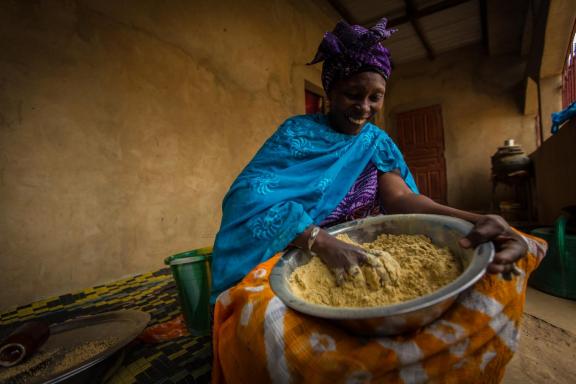
The Micronutrient Forum hosted CONNECTED 2020, its 5th Global Conference, with live-programming on November 9th-13th, 2020. This quadrennial global gathering brought together researchers, funders, policy makers, program managers, private sector, civil society advocates, and other global stakeholders to share the latest evidence and experiences related to the multi-faceted causes of anemia.
Technical experts from USAID Advancing Nutrition’s Food Systems, Nutrition in Humanitarian Contexts, and Monitoring, Evaluation and Learning teams presented posters and oral presentations, and guidied discussions on a variety of topics:
Plenary Session
The following session was streamed live for all registered participants and a recording has been made available after the session.
- Cost Analysis is Essential before Considering Scaling-Up Micronutrient Interventions (Heather Danton, USAID Advancing Nutrition; Stephen A. Vosti, UC Davis; Omar Dary, USAID; Keith Lividini, HarvestPlus; J.V. Meenakshi, Delhi School of Economics; Carol Levin, University of Washington; Jack Clift, Results for Development; Ziauddin Hyder, World Bank Group)
Thursday, November 12, 2020 - 10:00-11:30AM EST
Sponsored Side Session
The following side session was only available to standard registrants with access to “on -demand” content.
- New Horizons in USAID’s Approach to Food Assistance and Nutrition
Oral Presentations
The following oral presentations are only available to standard registrants with access to “on -demand” content.
- Variability in hemoglobin concentration by measurement tool and blood source: an analysis from seven countries (Aviva Rappaport, McGill University)
- Can We Improve the Nutrition-Sensitive Selection of Modalities to Deliver Food Assistance?: Ensuring Diet Quality and Micronutrient Adequacy for Program Participants (Tina Lloren, USAID Advancing Nutrition)
Posters
Posters below are from various events held during the conference.
- Use of Household Consumption and Expenditure Survey Data to Identify Risk of Inadequate Micronutrient Intake and Potential Strategies to Fill Micronutrient Gaps (Monica Woldt, USAID Advancing Nutrition)
- Opportunities to Improve Micronutrient Intake through Food Processing in USAID’s Feed the Future Program (Monica Woldt, USAID Advancing Nutrition)
- Iodine in salt can be determined in a common UV/Vis spectrophotometer in a reliable, low cost, and simple manner (Denish Moorthy, USAID Advancing Nutrition)
- Demographic and health surveys from Guatemala, Jordan, and Malawi reported lower mean hemoglobin values in children than micronutrient status surveys (Denish Moorthy, USAID Advancing Nutrition)
- Lessons in Collaboration from DRC to Address Acute Malnutrition Programming in Complex Settings (Ina Schonberg, USAID Advancing Nutrition)
- Determinants of Women’s Dietary Diversity and Consumption of Micronutrient-rich Foods in Winter in the Kyrgyz Republic (Altrena Mukuria, USAID Advancing Nutrition)